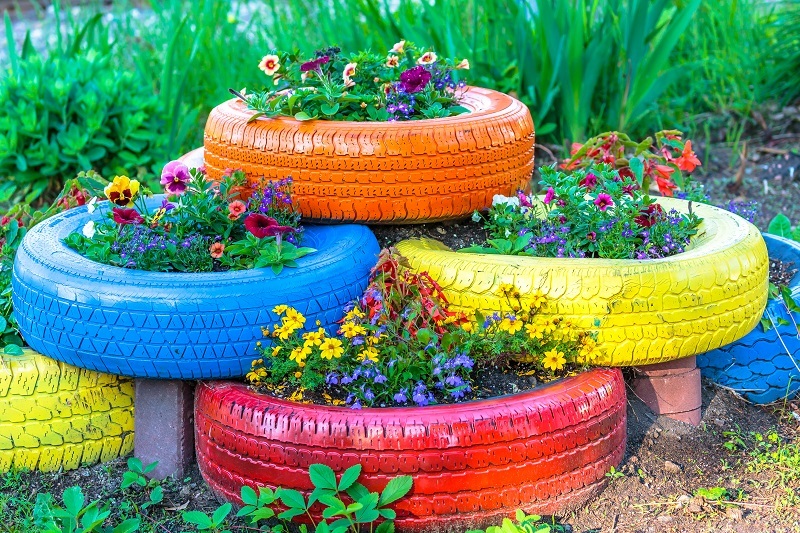Expert advice to ensure your hydrangeas thrive
Posted on 31/08/2025
Expert Advice to Ensure Your Hydrangeas Thrive
Hydrangeas are beloved garden shrubs known for their stunning blooms and lush, leafy presence. From classic mopheads to subtle lacecaps and dramatic panicles, hydrangeas add a touch of elegance to any landscape. But, while these flowering beauties may seem effortless, they do require proper care and expertise to reach their full potential. In this comprehensive guide, discover top expert tips to make your hydrangeas thrive season after season.

Understanding Hydrangea Varieties and Choosing the Right One
Before planting, it's crucial to pick the right hydrangea species for your climate, garden design, and personal taste. Hydrangea varieties have different flower shapes, colors, and care requirements. Understanding these differences is your first step towards a thriving hydrangea garden.
Main Types of Hydrangeas
- Bigleaf Hydrangea (Hydrangea macrophylla): The most common, includes mophead and lacecap. Blooms can shift from pink to blue based on soil pH.
- Panicle Hydrangea (Hydrangea paniculata): Cone-shaped flowers, extremely hardy, and often blooms turn from white to pink as they age.
- Smooth Hydrangea (Hydrangea arborescens): Famous for the 'Annabelle', resilient and excellent for colder climates.
- Oakleaf Hydrangea (Hydrangea quercifolia): Distinctive oak-shaped leaves, great autumn color, prefers well-drained soil.
- Mountain Hydrangea (Hydrangea serrata): More compact, lacecap flowers, perfect for smaller gardens.
- Climbing Hydrangea (Hydrangea petiolaris): Vigorous climbers that can cover walls or fences.
Choosing the Best Variety for Your Landscape
- If you have shady spots: Bigleaf and oakleaf hydrangeas excel in partial shade.
- For cold climates: Smooth and panicle hydrangeas handle harsh winters better.
- Small gardens or containers: Mountain hydrangeas offer compact growth and beauty.
- Want a vertical statement? Climbing hydrangeas are perfect for walls and trellises.
Choosing the right hydrangea variety will make your job easier and boost your garden's success.
Planting Hydrangeas: Location, Soil, and Timing
Finding the Perfect Spot
Hydrangeas thrive with the right balance of sun and shade. Morning sun with afternoon shade is ideal for most types. Too much hot sun, especially in southern climates, can scorch leaves and blooms.
- Bigleaf and oakleaf hydrangeas prefer partial shade.
- Panicle and smooth hydrangeas tolerate more sun and can thrive in full sun in cool climates.
Soil Preparation Tips
- Rich, well-drained soil is crucial. Amend heavy clay or sandy soils with plenty of organic matter like compost.
- The ideal soil pH is slightly acidic (5.5 to 6.5), but certain hydrangeas' bloom color depends on pH.
- Test your soil before planting and adjust with recommended amendments as needed.
When to Plant Hydrangeas
Hydrangeas are best planted in the spring or fall when the weather is cool and moist. This gives roots time to establish before the stress of summer heat or winter cold.
Watering: The Backbone of Thriving Hydrangeas
Consistent watering is essential for healthy, productive hydrangeas. These shrubs have shallow root systems and can dry out quickly, especially during hot or windy weather.
- Regular deep watering (about 1 inch per week) encourages deep root growth and keeps blooms lush.
- Mulch with 2-3 inches of shredded bark or compost to conserve moisture and moderate soil temperature.
- Water at the base, not overhead, to avoid promoting disease.
- Use drip irrigation or soaker hoses for best results.
- During drought or heatwaves, water more often and early in the day.
Tip: Wilting in midday is common, but if leaves remain wilted in the evening, your hydrangea needs a good drink!
Feeding and Fertilizing for Maximum Blooms
Nutrient Essentials
Feeding hydrangeas properly is key to supporting healthy growth and abundant blossoms.
- In early spring, apply a slow-release balanced fertilizer (such as 10-10-10 or 14-14-14).
- Too much nitrogen encourages lush foliage but reduces flowering. Don't overfeed!
- Supplement with compost or well-rotted manure annually for added nutrients.
If you conduct a soil test (highly recommended), you can tailor fertilizers and amendments to exactly what your yard needs.
Altering Flower Color: A Unique Hydrangea Feature
Bigleaf and mountain hydrangeas have the remarkable ability to change bloom color based on soil pH:
- Blue flowers: Acidic soil (pH below 6.0).
- Pink flowers: Alkaline soil (pH above 7.0).
To shift your blooms from pink to blue, add aluminum sulfate or elemental sulfur. For bluer flowers, keep aluminum in the soil by maintaining acidity. To turn blooms pink, incorporate lime to raise pH. Always test soil before amending!
Pruning Hydrangeas for Health and Blooms
Proper pruning is vital to keep your hydrangeas thriving and to encourage spectacular flower displays. Pruning time and method depend on your hydrangea variety.
When to Prune Each Type
- Bigleaf and mountain hydrangeas: Prune immediately after flowering in summer. These bloom on old wood (last year's stems).
- Panicle and smooth hydrangeas: Prune in late winter or early spring before growth begins. These bloom on new wood (the current season's growth).
- Oakleaf hydrangeas: Only remove dead or damaged stems; prune lightly in summer after blooms fade if needed.
How to Prune Hydrangeas Like a Pro
- Remove dead, diseased, or crossing branches at any time to open the shrub for better air flow and sunlight.
- For larger, showier blooms, cut panicle or smooth hydrangea stems back by one-third in late winter.
- Never prune bigleaf hydrangeas in fall, as you'll remove flower buds for next year's display!
Protecting Hydrangeas from Pests and Diseases
While generally robust, hydrangeas can fall prey to pests and diseases if not properly cared for. With a few precautions, you can keep your blooms healthy and bright.
Common Hydrangea Problems
- Powdery mildew and leaf spot: Prevent by avoiding overhead watering and spacing plants for good air circulation.
- Aphids, spider mites, and scale insects: Control by spraying with water, using insecticidal soaps, or attracting natural predators.
- Deer and rabbits: Hydrangeas are sometimes appealing snacks. Use fencing or repellents in areas with heavy browsing.
Healthy Practices to Prevent Issues
- Keep the area around plants clean and remove fallen leaves.
- Regularly inspect for pests and treat early before infestations spread.
- Choose disease-resistant hydrangea varieties if you've had issues in the past.
Seasonal Care: What to Do Through the Year
Spring Hydrangea Care
- Fertilize as growth resumes with a balanced product.
- Mulch to conserve moisture.
- Check for winter damage and prune as needed.
Summer Hydrangea Care
- Water during dry spells.
- Deadhead spent blooms to encourage continued flowering (except for oakleaf).
- Monitor for pests and treat promptly.
Fall Hydrangea Care
- Cease fertilizing to harden off new growth.
- Deep water before ground freezes.
- Apply a thick layer of mulch around the base in colder climates for root protection.
Winter Hydrangea Care
- In harsh winters, wrap shrubs in burlap or cover with pine boughs.
- Protect from heavy snow and wind exposure to avoid branch damage.
Expert Troubleshooting: Solving Common Hydrangea Problems
Why Isn't My Hydrangea Blooming?
- Incorrect pruning: Old wood-blooming types pruned at the wrong time lose next season's buds.
- Winter kills flower buds: Protect bigleaf and mountain hydrangeas in cold regions.
- Too much shade or over-fertilization: Flowers are reduced.
- Immature plants: Sometimes, new hydrangeas need a few years to settle in before blooming fully.
Poor Leaf Color or Wilting
- Chlorosis (yellowing leaves): Often caused by high pH soil, iron deficiency, overwatering, or poor drainage.
- Improve soil, reduce watering, and use chelated iron as needed.
Stunted or Leggy Growth
- Too little light or overcrowding: Prune back competing shrubs.
- Poor soil or lack of nutrients: Amend and fertilize as needed.
Creative Hydrangea Uses in the Garden
Hydrangeas are versatile and can be:
- An eye-catching hedge or border along pathways.
- A feature in mixed shrub beds or perennial gardens.
- Planted in containers for patios and small spaces.
- Paired with ferns, hostas, and shade-tolerant perennials for dynamic contrast.
- Used as cut flowers or even dried for year-round decor.

Quick Hydrangea Care Checklist
- Choose the right variety for your climate and space.
- Plant in a location with morning sun and afternoon shade.
- Ensure rich, well-drained, slightly acidic soil.
- Water deeply and mulch to retain moisture.
- Fertilize in spring, avoid overfeeding.
- Prune at the right time for your variety.
- Monitor for pests and diseases.
- Protect from harsh winter conditions if necessary.
Conclusion: Enjoy Thriving Hydrangeas for Years to Come
With the right expert advice and attention, your hydrangeas will reward you with robust growth, spectacular blooms, and lasting garden beauty. Remember--successful gardening is a journey of observation, learning, and adaptation. Stay tuned to your hydrangeas' needs, and they'll thrive for many seasons to come. For even more hydrangea care tips and seasonal inspiration, keep exploring our expert guides!
Latest Posts
Expert advice to ensure your hydrangeas thrive
The ultimate guide to low-maintenance office plants
Explore 3 User-Friendly Ways to Keep Your Flowers Fresh
Beyond the Bloom: 8 Surprising Facts About Sunflowers You Didn't Know







